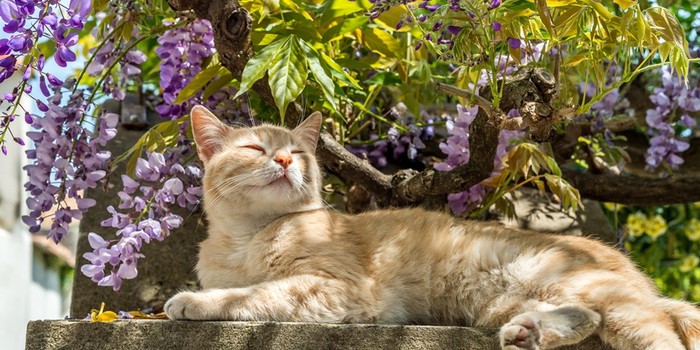

Written by Jane Williams for Halifax Humane Society
If you are a lucky ‘parent’ to one of the 3.2 million adopted animals this year in the U.S., then without a doubt, one of your biggest concerns lies in making your home safe and secure, so that escapes, accidents, and injuries don’t occur. In addition to taking care with the layout of your interiors and the storage of potentially toxic chemicals, it is equally vital to ensure that your yard is safe. Most dogs and cats like to spend time in the garden, resting under a shady tree or playing games with the family so it is important to ensure that safety requirements are met before taking your pet home.
Eliminating Toxic Plants from the Garden
Everyday plants found in American gardens, such as daffodils, lilies or azaleas, can be highly toxic to pets so it is important to carefully read the ASPCA’s list of plants to avoid for dogs, cats (or any other pet you are taking home), weeding any offenders out and replacing them with safe alternatives. If your garden is sizable and you aren’t sure what species are in it, ask a gardener to pop round and identify any plants that shouldn’t be there. Some plants are high toxic, and can cause organ damage and even death so this should be a big priority.
Reducing a Pet’s Drowning Risk
There are 10.4 million residential pools in America, and according to The Association of Pool & Spa Professionals, around five million hot tubs are sold in the U.S. every year. Especially in the winter, a warm whirlpool can soothe aching muscles and help you relax while in the summer, few things beat a refreshing dip in the pool. However, if you have a pool or hot tub in your backyard, be aware that it can pose a drowning risk for dogs and cats. This is especially true in the case of breeds with large, heavy heads (such as the English bulldog). To keep dogs safe, ensure you have a sturdy pool fence that is closed at all times in which you are not using the pool. Make sure that whirlpools are emptied when they are not in use. For cats, make sure to cover your pool with a net whose holes are small enough so that your kitten cannot fall through. Finally, consider purchasing an alarm, which will emit a loud noise if someone or something falls into the pool by mistake.
Preventing Escapes
Dogs in particular can make hasty escapes from a home, since they tend to enjoy standing by the gate and watching the street, and they can be tempted to wander around. Escapes can be avoided by placing a paved or stone path between the gate and the grassy area. Hedges can also be grown; tight, sturdy species will act as a good digging deterrent. For pooches that are natural born diggers, create a mini sandpit in an inner area of the yard. Just dig up a bit of dirt and fill it with sand. Hide your dog’s toys in the sand and watch them dig away!
We have mentioned just a few ways to keep your yard safe for pets. Top priorities should include avoiding poisoning, eliminating drowning risks, and preventing breakouts. Storage is also important; make sure all toxic cleaning products and chemicals are stored in cupboards that your pet cannot open with its paws. Finally, seek the help of a gardener or pool fence professional if you are insecure about the current safety level of your yard.
Previous Article